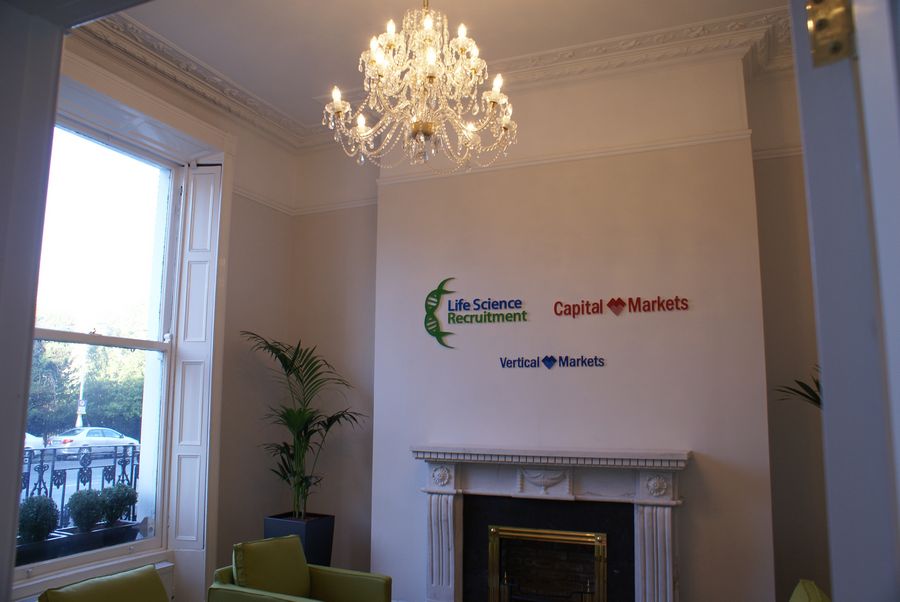On Monday and Tuesday last, Trinity College @tcddublin hosted EISRI 2013: European Intersectoral Summit on Research and Innovation #sciencemedia #EISRI. The theme of the summit was the role of media (and new media) in responsible research and innovation with discussions on important topics to the science community and the general public, including research ethics, open access and the role of science journalism. One of the stand-out talks of the day was by Alexander Gerber @InnoKomm, an information scientist and the Managing Director of Innocomm Research, which is a Berlin-based research centre for science and innovation communication.
The theme of the summit was the role of media (and new media) in responsible research and innovation with discussions on important topics to the science community and the general public, including research ethics, open access and the role of science journalism. One of the stand-out talks of the day was by Alexander Gerber @InnoKomm, an information scientist and the Managing Director of Innocomm Research, which is a Berlin-based research centre for science and innovation communication.
Category Archives: Life Sciences
A Unitary Patent System for Europe
Representing one of the final major steps towards the establishment of a unitary patent system for Europe, the Unified Patent Court Agreement was signed by the majority of EU Member States in Brussels last week (19 February 2013).
What is the Unified Patent Court Agreement?
This Agreement constitutes a package which also includes two EU Regulations: unitary patent protection; and, associated translation arrangements (adopted in December 2012). The package provides the legal basis for the future European Unitary Patent system – a system that has been a hot topic of discussion at European level for over thirty years.
The Unified Patent
 Current practice requires that for a business or individual to confer legal protection to their intellectual property, an application for patent protection must be submitted centrally, through the European Patent Office (EPO) in Munich. Once granted, the patent must be validated in each state in which protection is sought, a process that can involve significant costs due to translation and local validation fees.
Current practice requires that for a business or individual to confer legal protection to their intellectual property, an application for patent protection must be submitted centrally, through the European Patent Office (EPO) in Munich. Once granted, the patent must be validated in each state in which protection is sought, a process that can involve significant costs due to translation and local validation fees.
Round up of Life Science News – Feb 2013
Irish Biopharma Amarin kicks off sales in the US
Vascepa, a drug developed by Irish biopharma group Amarin, which gained FDA approval last July for the treatment dangerously high cholesterol, has gone on sale in the United States. Vascepa, essentially a purified omega-3 fish oil, marks a vindication for the company which came close to collapse at one point in the drug’s development. Vascepa reduces high triglyceride levels in the blood without causing elevations of LDL-C, the so-called “bad cholesterol.” GlaxoSmithKline’s competing fish-oil pill Lovaza also lowers triglycerides but at the expense of rising bad cholesterol. Amarin management has cautioned investors not to expect Vascepa to rocket out of the starting gate but the company is expecting significant success with the drug. By 2014, Amarin may have more of an advantage over GSK if FDA approves an expanded indication for Vascepa allowing the drug to be marketed for patients with high (as opposed to very high) triglyceride levels. Significant use in this larger patient population may not really ramp, however, until Amarin can prove that the combination of Vascepa and a statin reduces the incidence and risk of cardiovascular disease. An on-going study designed to demonstrate this benefit isn’t expected to be completed until 2016.
Abbott Vascular announced 200 Redundancies
Last week, medical devices firm Abbott Vascular in Clonmel announced that it is seeking 200 voluntary redundancies from its permanent workforce. Abbott’s vascular facility in Clonmel currently employs more than 1,400 people and manufactures drug eluting stents for the global market.
DCU announces 200 Cleantech jobs
Minister for Jobs, Enterprise and Innovation, Richard Bruton TD has officially launched a new national centre for innovation in the Cleantech sector at DCU Innovation Campus.
 The initiative was established on a site previously owned by Enterprise Ireland to DCU for the specific purpose of this project and will be the location of choice for Cleantech start-ups, SMEs and larger companies. Cleantech – a fast-growing area of international commerce is worth 5 trillion annually and provides insight to Fortune 1000 corporations regarding environmental challenges – wind, water and waste management to name just a few. This insight helps to make better decisions that foster growth, reduce cost and meet consumer and government demands for improved environmental quality.
The initiative was established on a site previously owned by Enterprise Ireland to DCU for the specific purpose of this project and will be the location of choice for Cleantech start-ups, SMEs and larger companies. Cleantech – a fast-growing area of international commerce is worth 5 trillion annually and provides insight to Fortune 1000 corporations regarding environmental challenges – wind, water and waste management to name just a few. This insight helps to make better decisions that foster growth, reduce cost and meet consumer and government demands for improved environmental quality.
Life Science Recruitment – Embracing the Future Through History
Life Science Recruitment is proud to announce that we have moved to a New Dublin Location at 12 Fitzwilliam Square. Due to continued growth and expansion of the company there was a need to move to a larger premises in order to best accommodate our role as the Leading Recruitment agency for various science industries: Connected Health, Quality Control, Pharmaceutical & Healthcare, Medical, Clinical Research and all other Science Jobs etc.- the list goes on.

As our numerous clients know Life Science Recruitment has always strived to be progressive and forward thinking in our approach to Recruitment and job placement. We have always looked and worked towards the future but have a truly great appreciation of the past and what has gone before. We are very pleased with this historic building now in our care, because we believe that a connection with the past is very important when carving out the future – for us that means putting more people in the right jobs.
12 Fitzwilliam Square is a magnificent Georgian house with a long history. This beautiful building has strong ties to the Graves family among whom was Robert Graves (1895-1985), poet, novelist, biographer, mythographer & classical scholar whose grandfather Charles Graves was born here in the early 1800s.
Even more closely associated with the premises, Charles Graves (1812-1899) had great notability in his own right as Scholar and as the Anglican Bishop of Limerick, Ardfert and Aghadoe. He was also a successful mathematician.
Educated at Trinity College, Dublin from 1829 to 1835, Charles won a scholarship in the Classics. On graduating he took the gold medal in mathematics and physics – a historical fact which appealed to the team here at Life Science!
In 1841 Graves published an original mathematical work and he embodied further discoveries in his lectures and in papers read before and published by the Royal Irish Academy. He was a colleague of Sir William Rowan Hamilton and on the latter’s death Graves gave a presidential panegyric containing a valuable account both of Hamilton’s scientific labours and of his literary attainments.

Charles Graves was very interested in Irish antiquarian subjects. He discovered the key to the ancient Irish Ogham script which appeared as inscriptions on Cromlechs and other stone monuments. He also prompted the government to publish the old Irish Brehon Laws, Early Irish Law. His suggestion was adopted and he was appointed a member of the Commission to do this.
Fitzwilliam Square itself is located on the south side of the city in an area once part of the land of Baggotsrath and acquired by the Fitzwilliam family in 1381. The development of the Fitzwilliam estate was stirred by James Fitzgerald (Earl of Kildare), when he built Kildare House on Fitzwilliam’s land in 1745. The lawns of Kildare House, later renamed Leinster House, faced east and led to plans to develop Merrion street and square in the 1750’s and 1760’s. Jonathan Barker’s 1764 map of the planned Merrion square shows a street marked ‘The Intended New Street’, which corresponds with today’s Fitzwilliam street and the east side of Fitzwilliam Square and is the first indication of plans to develop in this direction. Many houses in the map are shown to take the older architectural form of the ‘Dutch Billy’, obviously before the decision to build the houses in the uniform fashion and scale that is now known as the Georgian style.
In general the leases of Fitzwilliam Square were acquired by speculators who erected houses in ones and twos and sold them off quickly. The plots of numbers 9 to 12 Fitzwilliam Square were leased by Viscount Fitzwilliam to the merchant Nathaniel Calwell at the start of the 19th Century. Calwell employed the builder and master carpenter Richard Knight to erect houses on these plots.
Members of the earlier mentioned Graves family occupied the house continually from 1814 onwards and for most of the 19th Century.
“You call that hagglin’?” – on salaries and negotiation

 For anyone who has seen the movie “Life of Brian,” the haggle scene has to be one of the funniest: Life of Brian – Haggle
For anyone who has seen the movie “Life of Brian,” the haggle scene has to be one of the funniest: Life of Brian – Haggle
At the end of the recruitment process, there is the inevitable offer. Do companies ‘lowball’ (ie offer less to see what they can get away with) candidates in a tough economy? Are all offers final? Is negotiation, or haggling, part and parcel of the process?
This is an area where working with a recruiter is a huge advantage. One of MANY, of course!! It’s great to have an intermediary to speak on your behalf and talk directly to the company about the specifics of an offer. In our experience, the majority of offers which are tabled are fair. A good recruiter will find out what your exact package is and where your expectations lie, as they are sending your CV to the company. We do this with all candidates, in order to remove any ambiguity which may exist when candidates get to this final stage of the process.
However, some companies will try to offer less in order to grab a bargain as it were. Some almost expect a haggle! They can view this as a sign of what kind of candidate they are dealing with: if a candidate can’t negotiate now then how will they perform in high-pressure situations with stakeholder / suppliers / buyers etc?
Care is needed in this process, however. Candidates can’t seem overly hungry or greedy, so balance is key. The specifics of the contract must be examined and questioned if there are any issues. This also demonstrates that the candidate is detailed-orientated and careful. Any approaches made regarding salary must be considered and well thought-out. Larger companies tend to have tight salary bands, outside of which there may be no negotiation. A bit like Arsenal FC a few years ago! Smaller companies may have more flexibility, but may also be more cost conscious.
Know what you’re worth, and if you need to haggle to get there, haggle!
– Brian (brian.c at lifescience.ie)
Irish Life Science Directory 2011
Attached is the Irish Life Science Directory for 2011 – a superb document for anyone who is seeking to do some research on companies and trying to make their first move into Industry.
The full directory is here (Click into post to see working link):
– Brian (brian dot c at lifescience.ie)
Current State of the Pharmaceutical Industry
Eamonn’s recent contribution for the Sunday Business Post
Recruitment within the pharmaceutical sector has been quite stable over the last 12 months, with losses in certain departments, offset by gains in others. The pharmaceutical sector in Ireland seems to have been quasi-resistant to prevailing economic conditions, primarily due to the fact that product pipeline cycles within the sector can last between 12 – 20 years, so any intermittent instability in the financial markets have little, if any, effect on ongoing projects.
Areas such as quality within the manufacturing arms of the sector have suffered due to an oversupply of staff, combined with the shelving of many new initiatives, while areas such as corporate quality, medical affairs and sales and marketing have blossomed. Companies are placing greater emphasis on service, delivery and education regarding their products in the field.
Recent Job Losses
The main focus of job losses in the past 18 months within the pharmaceutical sector have been as a result of the numerous mergers and acquisitions that have occurred. Schering Plough and Merck merged their operations; the consequent consultation and restructuring process lead to the announcement of the winding down of operations at Schering Plough Bray. The Bray plant manufactures veterinary pharmaceuticals and 240 jobs are expected to be lost over a staggered two year period continuing into next year. Pfizer also merged with Wyeth in 2009 to create the single largest global pharmaceutical entity; however the impact of this merger has yet to be fully felt here in Ireland yet.
Plans for Expansion within the Industry
A recent announcement in the press intonated the plans by Pharmadel, in conjunction with the IDA to create a global pharmaceutical centre of excellence in Tralee, with the potential creation of over 4000 jobs. Plans are underway to make this a reality and if they come to fruition, this feat will secure Ireland’s place in the international league tables as a leader in the provision of both manufacturing and professional services for the pharmaceutical sector globally.
Recent Trends
Many companies have adapted their recruitment processes over the last year to refocus efforts on improving their direct recruitment strategy for entry-level and high volume staff. Traditionally, recruitment of specialist and senior level staff within the pharmaceutical sector has been quite difficult and recent trends observed here at lifescience.ie indicate that employers will continue to use niche and specialist agencies to source and engage these elusive high-level staff, whilst adopting new direct strategies including social media and web 2.0 technologies to improve direct resourcing strategies for high volume and easier to find staff.
Salary Variance
Salaries within the sector are quite variable at the moment, with manufacturing and quality stabilising or deflating slightly, while salaries within the corporate, medical affairs, regulatory, sales and marketing areas staying stable or inflating very slightly.
Skills in Demand
The main skill-sets in demand at the moment are within commercial and medical affairs. These departments form part of the corporate function of the pharmaceutical company and deal with sales and marketing (commercial) and regulatory, medical information, medical liaison, pharmacovigilance and clinical research (medical). There has been a definite move to strengthen these departments over the last two years by the major players in the industry, to consolidate market share in the face of increased competition and to increase the level of education of key opinion leaders in the field, enhancing reputation and brand awareness.
Recruitment Expectations
In general, I expect recent trends of increased activity to continue well into next year with companies consolidating and streamlining manufacturing operations, strengthening their sales and marketing force, while further developing their medical affairs departments. Salaries will stabilise within manufacturing operations where there is an oversupply and may inflate slightly in medical and commercial where the specific skills-sets and experiential requirements are more in demand.
Explain Yourself!
We see a LOT of CVs on a daily basis (I even see CVs in my sleep on weekends – OK maybe not!).
Some points that occurred to me recently that are very important:
-NEVER address an email to Sir / Madam or “To Whom it Concerns”. This is lazy. Go onto LinkedIn, find the name of the person you need. If you can’t find it here, contact the company directly and simply ask for the contacts name / email. This will make your application stand out.
-When composing your CV, put yourself in the mind of a HR Manager. They often from Arts / Business backgrounds and sometimes don’t have a lot of technical knowledge (no offence!). You therefore need to explain everything in your CV. If you have worked with local regulatory authorities, write “the IMB” or “FDA”, as a HR person could have been told (“I only want CVs with IMB / FDA experience”). If you have worked with ERP systems, highlight which ones in the experience section, NOT ONLY in the skills section. Your CV could easily get overlooked otherwise.
-Expanding this point, make sure all acronyms are explained. Sometimes even technical people will not know what something means, so put yourself in their shoes and write it from their perspective.
As always, get in touch if you have any particular topics you’d like us to cover, or if you have any thoughts on the above
-Brian (bhc at lifescience dot ie)

 Social media has had a rapid and successful adoption by companies in a number of sectors including telecoms, travel, entertainment, and not stating the obvious, IT and marketing. Its uses span rapid and real time customer service, competitive intelligence to enhance the consumer’s experience and brand awareness and activation. However, many business leaders wonder where the value lies in its use in the pharmaceutical, healthcare or similar scientifically based companies. A lot of people view it as frivolous and potentially damaging to their company’s reputation to be involved in such ‘social practices’. Furthermore, many fear the risks that may ensue from the open and uncontrolled communication between patient, healthcare provider and manufacturer which the platform could facilitate. In a highly regulated and controlled environment, which many pharmaceutical and life science companies operate in, such unregulated activities may seem terrifying.
Social media has had a rapid and successful adoption by companies in a number of sectors including telecoms, travel, entertainment, and not stating the obvious, IT and marketing. Its uses span rapid and real time customer service, competitive intelligence to enhance the consumer’s experience and brand awareness and activation. However, many business leaders wonder where the value lies in its use in the pharmaceutical, healthcare or similar scientifically based companies. A lot of people view it as frivolous and potentially damaging to their company’s reputation to be involved in such ‘social practices’. Furthermore, many fear the risks that may ensue from the open and uncontrolled communication between patient, healthcare provider and manufacturer which the platform could facilitate. In a highly regulated and controlled environment, which many pharmaceutical and life science companies operate in, such unregulated activities may seem terrifying.